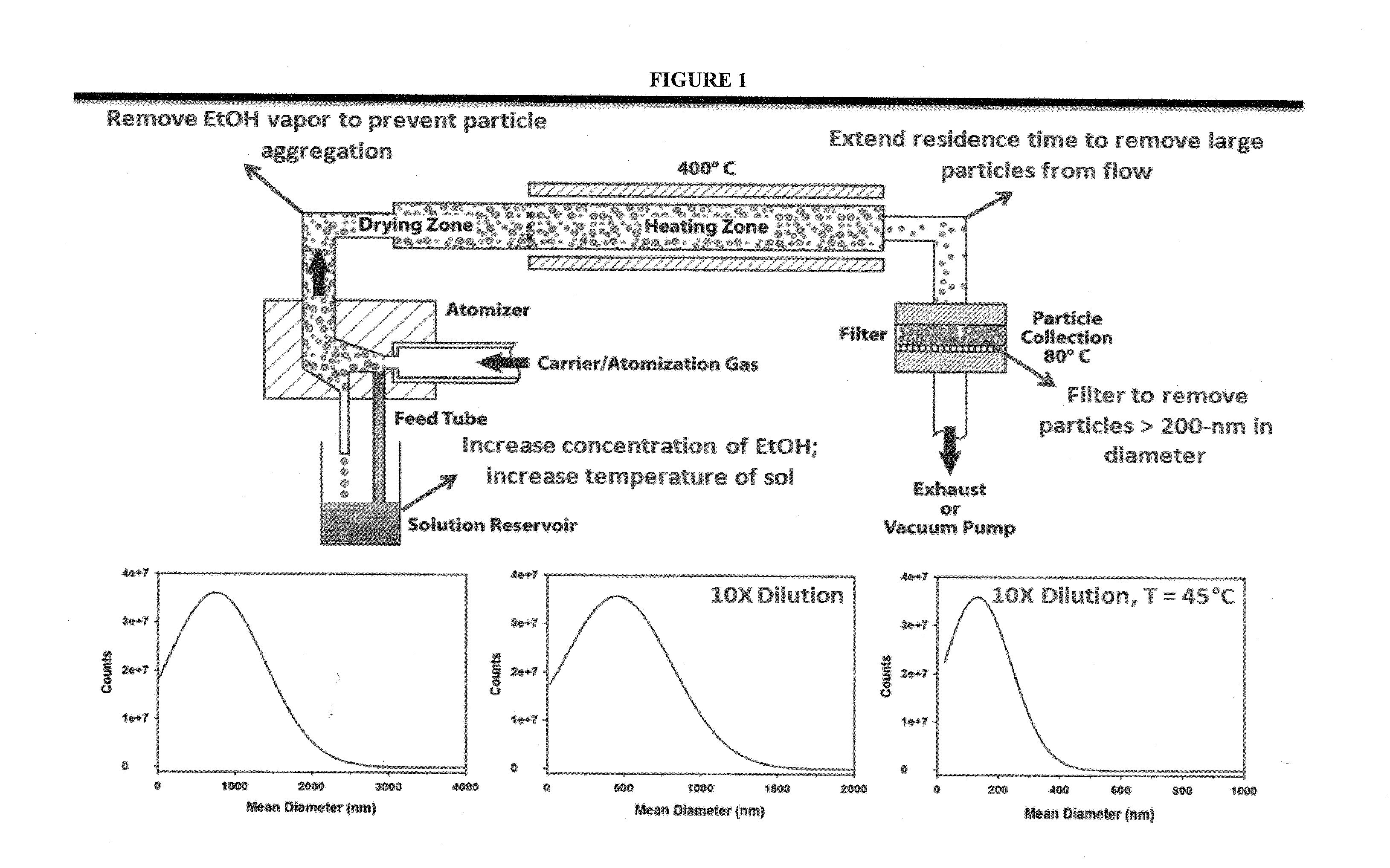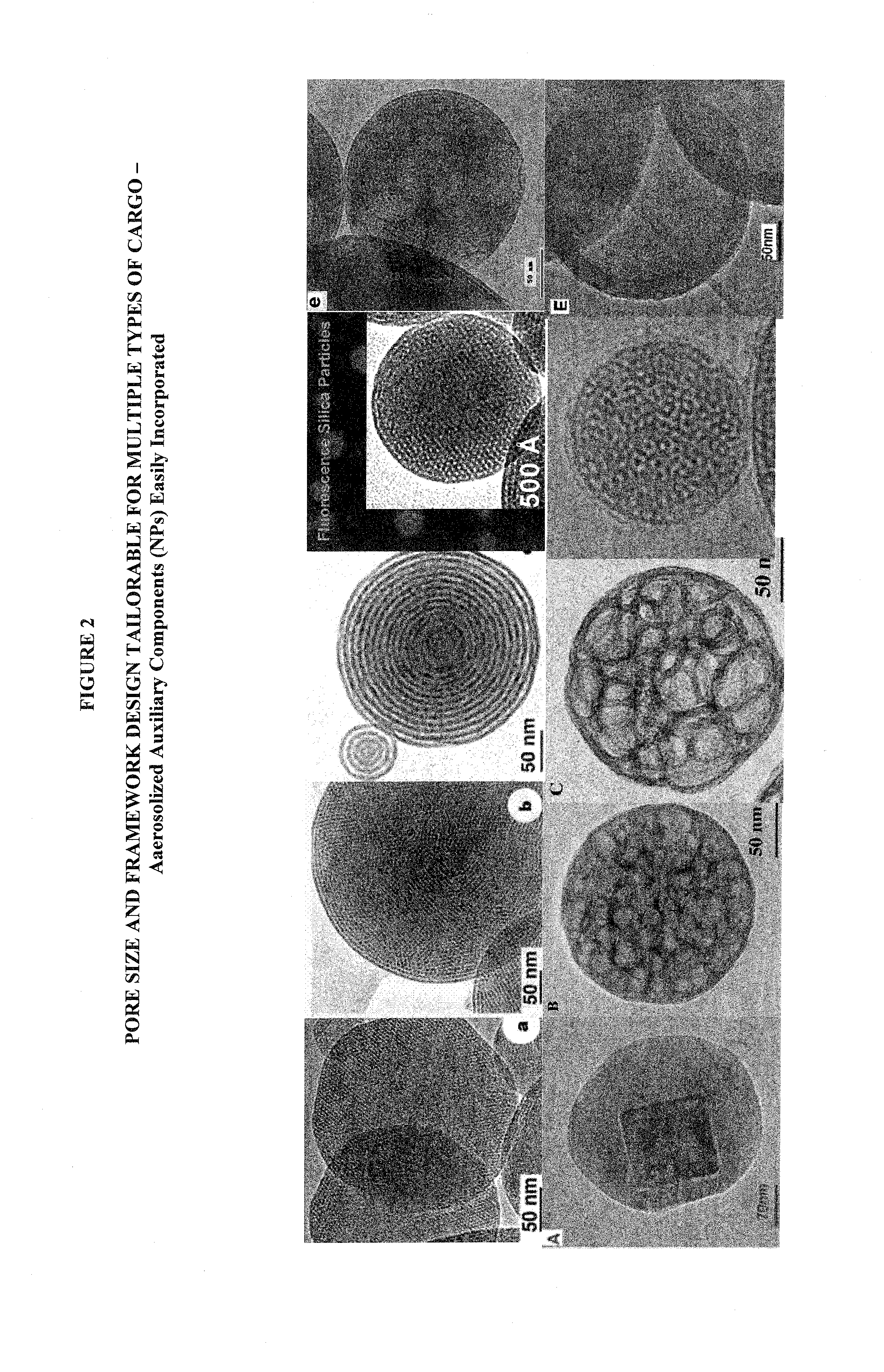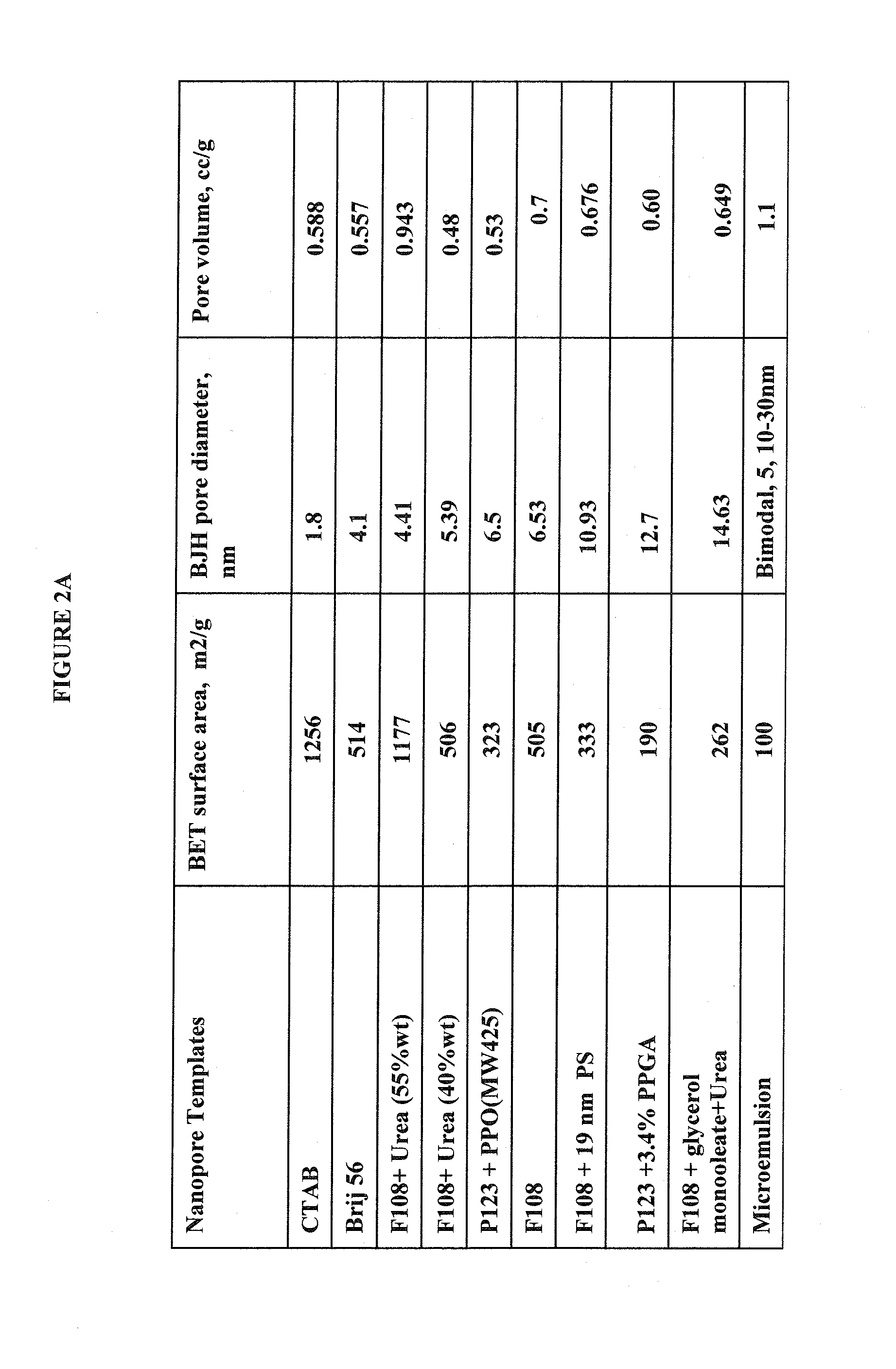Porous nanoparticle-supported lipid bilayers (protocells) for targeted delivery including transdermal delivery of cargo and methods thereof
a nanoparticle-supported, cargo-delivering technology, applied in the direction of powder delivery, dna/rna fragmentation, non-active genetic ingredients, etc., can solve the problems of limited stability, decreased therapeutic efficacy, and non-specific toxicity to normal cells, and achieve high capacity loading, high surface area, and stable porosity
- Summary
- Abstract
- Description
- Claims
- Application Information
AI Technical Summary
Benefits of technology
Problems solved by technology
Method used
Image
Examples
example 1
REFERENCES FOR EXAMPLE 1
[0281]1 Carroll, N. J., Pylypenko, S., Atanassov, P. B. & Petsev, D. N. Microparticles with Bimodal Nanoporosity Derived by Microemulsion Templating. Langmuir, doi:10.1021 / 1a900988j (2009).[0282]2 Lu, Y. F. et al. Aerosol-assisted self-assembly of mesostructured spherical nanoparticles. Nature 398, 223-226 (1999).[0283]3 Iler, R. K. The Chemistry of Silica: Solubility, Polymerization, Colloid and Surface Properties, and Biochemistry. (John Wiley and Sons, 1979).[0284]4 Doshi, D. A. et al. Neutron Reflectivity Study of Lipid Membranes Assembled on Ordered Nanocomposite and Nanoporous Silica Thin Films, Langmuir 21, 2865-2870, doi:10.1021 / 1a0471240 (2005).[0285]5 Bernhard, M. I. et al. Guinea Pig Line 10 Hepatocarcinoma Model: Characterization of Monoclonal Antibody and in Vivo Effect of Unconjugated Antibody and Antibody Conjugated to Diphtheria Toxin A Chain. Cancer Research 43, 4420-4428 (1983).[0286]6 Lo, A., Lin, C. T. & Wu, H. C. Hepatocellular carcinoma ...
example 2
REFERENCES FOR EXAMPLE 2
[0327]1. “FASS.se.” Mobil.fass.se. Web. 26 Jan. 2010.[0328]2. Benson, H. 2005. Transdermal Drug Delivery: Penetration Enhancement Techniques. Current Drug Delivery. 2: 23-33[0329]3. Kear, C., Yang, J., Godwin, D., and Felton, L. 2008. Investigation into the Mechanism by Which Cyclodextrins Influence Transdermal Drug Delivery. Drug development and Industrial Pharmacy. 34:692-697.[0330]4. Bany, B. W. 2001. Novel mechanisms and devices to enable successful transdermal drug delivery. European Journal of Pharmaceutical Sciences. 14101-1 14[0331]5. Maghraby, G., Barry, W., and Williams, A. 2008. Liposomes and skin: From drug delivery to model membranes. European Journal of Pharmaceutical Science. 34203-222.[0332]6. Singh, B., Singh, J. and Singh, B. N. 2005. Effects of ionization and penetration enhancers on the transdermal delivery of 5-fluorouracil through excised human stratum corneum. International Journal of Pharmaceutics. 298:98-107.[0333]7. Douroumis, D., an...
example 3
REFERENCES FOR EXAMPLE 3
[0401]1. Peer D, Karp J M, Hong S, Farokhzad O C, Margalit R, Langer R. Nanocarriers as an emerging platform for cancer therapy. Nat Nano. 2007; 2(12):751-760.[0402]2. Petros R A, DeSimone J M. Strategies in the design of nanoparticles for therapeutic applications. Nat Rev Drug Discov. 2010; 9(8):615-627.[0403]3. Wang M, Thanou M. Targeting nanoparticles to cancer. Pharmacological Research. 2010; 62(2):90-99.[0404]4. Meister G, Tuschl T. Mechanisms of gene silencing by double-stranded RNA. Nature. 2004; 431(7006):343-349.[0405]5. Rana T M. Illuminating the silence: understanding the structure and function of small RNAs. Nat Rev Mol Cell Biol. 2007; 8(1):23-36.[0406]6. Davidson B L, McCray P B. Current prospects for RNA interference-based therapies. Nat Rev Genet. 2011; 12(5):329-340.[0407]7. Lares M R, Rossi J J, Ouellet D L. RNAi and small interfering RNAs in human disease therapeutic applications. Trends in Biotechnology. 2010; 28(11):570-579.[0408]8. Bumcr...
PUM
 Login to View More
Login to View More Abstract
Description
Claims
Application Information
 Login to View More
Login to View More - R&D
- Intellectual Property
- Life Sciences
- Materials
- Tech Scout
- Unparalleled Data Quality
- Higher Quality Content
- 60% Fewer Hallucinations
Browse by: Latest US Patents, China's latest patents, Technical Efficacy Thesaurus, Application Domain, Technology Topic, Popular Technical Reports.
© 2025 PatSnap. All rights reserved.Legal|Privacy policy|Modern Slavery Act Transparency Statement|Sitemap|About US| Contact US: help@patsnap.com



